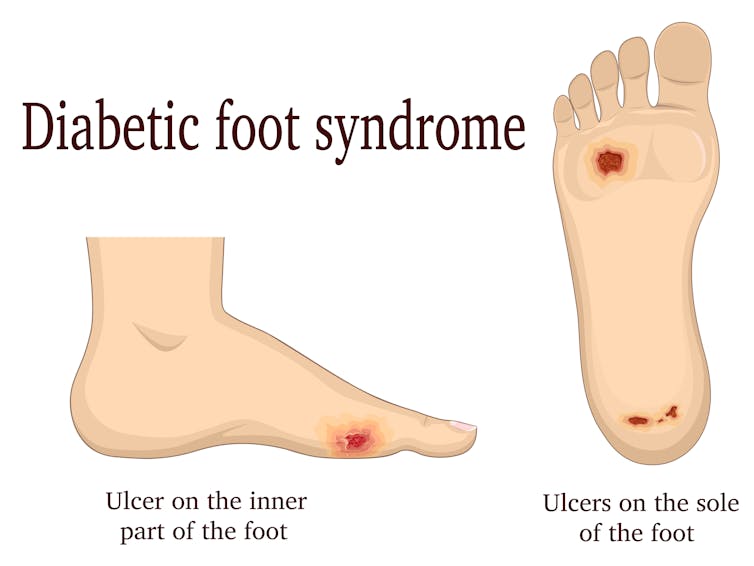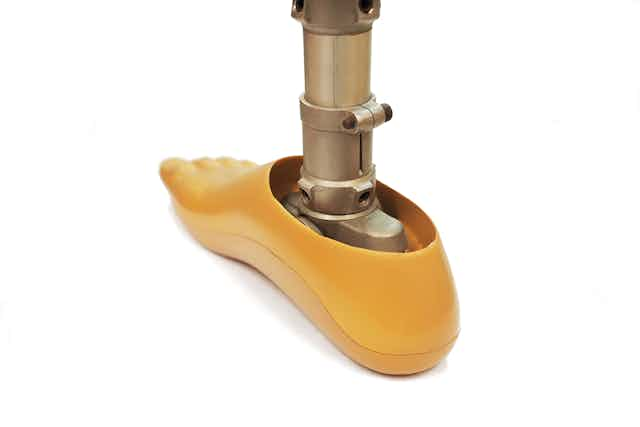Every 20 seconds someone, somewhere on the planet, loses a foot due to diabetes. Foot ulcers are the starting point of more than 80% of these amputations, and they could be prevented.
The number of people diagnosed with diabetes, globally, has risen from 108m in 1980 to 422m in 2014. This is a huge burden on healthcare services as diabetes is associated with many long-term health complications, including peripheral neuropathy, where nerves become damaged, leading to pain, numbness or weakness.
People with diabetes who develop neuropathy don’t feel pain when they are injured, so they may not notice soft tissue damage in the foot (or elsewhere) until the damage is quite extensive. Many of these people also have peripheral artery disease (PAD) as a result of poor blood circulation to the legs. PAD reduces a person’s ability to fight infection and puts them at a higher risk of developing foot ulcers.
People with diabetes have a 25% chance of getting foot ulcers. And if a person develops a foot ulcer they are at an increased risk of amputation because of infection and other related complications. Diabetes is one of the main causes of lower-limb amputation.

Not insurmountable
There are several ways to prevent or treat diabetic foot ulcers: regulating the person’s blood-sugar levels; ensuring that they are regularly screened for foot and other diabetes-related problems; educating them about their condition; and providing special shoes, insoles and foot braces.
The cost of treating diabetes-related foot issues puts a significant financial burden on healthcare services. In the UK alone the annual cost of treating “diabetic foot” (as these conditions are called) is about £650m. In the US, it is reported that the annual direct costs of diabetic foot complications are greater than the five major cancers.
While costs are increasing, healthcare professionals have yet to find an effective way to screen diabetic patients and treat complications caused by the disease. Our systematic reviews show that more research is needed before we can be sure about which specialist footwear and footwear materials are the most effective for diabetic foot.
In most cases, diabetic foot ulcers can be attributed to the accumulation of some kind of injury, nerve damage and deformity. About 80% of foot ulcers involve some form of trauma and are therefore potentially preventable. Also, many foot ulcers develop as a result of ill-fitting shoes.
Previous research examining the causal chain leading to diabetic amputations in 80 patients found that footwear was a factor in 42% of cases. Evidence shows that providing appropriate footwear to all patients with diabetes at risk of ulceration would be a cost-effective and potentially cost saving measure.
Screening based on low-quality evidence
Screening in primary care also needs to improve. Our review of foot screening guidelines and practices from various countries shows that there are disparities and inconsistencies in the methods and tools used to screen and diagnose patients at an early stage of their disease. Many of the screening guidelines are classified as “strong recommendation, based on low evidence”. When there is a strong recommendation for a specific treatment, there should be a high quality of evidence.
Often, when high quality evidence is not available, doctors have to make an educated guess based on their clinical experience. But there are lots of technological developments, such as gait analysis, thermal imaging and new materials for footwear, and healthcare professionals should start using these technologies to develop better diagnostics and treatments.
Current guidelines also fail to take the needs of different cultural and ethnic groups into account. For example, in certain cultures people don’t wear shoes in the house or places of worship, and this puts them at a higher risk of developing ulcers. Our review shows that there is a clear need for culturally specific, up-to-date guidelines on screening for and treating diabetic foot. Without them, we will continue to see unnecessary amputations and mounting costs.

